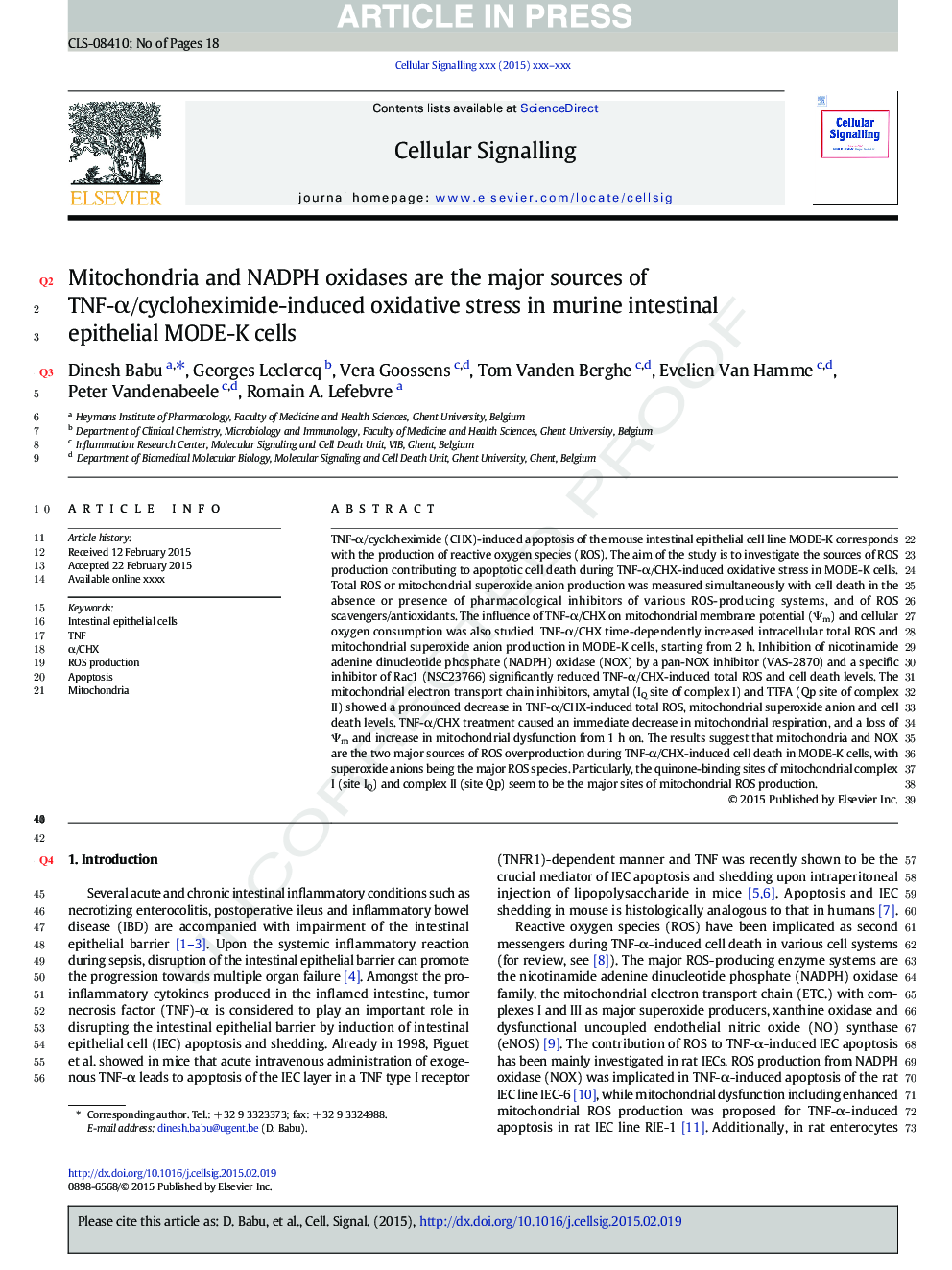| Article ID | Journal | Published Year | Pages | File Type |
|---|---|---|---|---|
| 10815054 | Cellular Signalling | 2015 | 18 Pages |
Abstract
TNF-α/cycloheximide (CHX)-induced apoptosis of the mouse intestinal epithelial cell line MODE-K corresponds with the production of reactive oxygen species (ROS). The aim of the study is to investigate the sources of ROS production contributing to apoptotic cell death during TNF-α/CHX-induced oxidative stress in MODE-K cells. Total ROS or mitochondrial superoxide anion production was measured simultaneously with cell death in the absence or presence of pharmacological inhibitors of various ROS-producing systems, and of ROS scavengers/antioxidants. The influence of TNF-α/CHX on mitochondrial membrane potential (Ψm) and cellular oxygen consumption was also studied. TNF-α/CHX time-dependently increased intracellular total ROS and mitochondrial superoxide anion production in MODE-K cells, starting from 2 h. Inhibition of nicotinamide adenine dinucleotide phosphate (NADPH) oxidase (NOX) by a pan-NOX inhibitor (VAS-2870) and a specific inhibitor of Rac1 (NSC23766) significantly reduced TNF-α/CHX-induced total ROS and cell death levels. The mitochondrial electron transport chain inhibitors, amytal (IQ site of complex I) and TTFA (Qp site of complex II) showed a pronounced decrease in TNF-α/CHX-induced total ROS, mitochondrial superoxide anion and cell death levels. TNF-α/CHX treatment caused an immediate decrease in mitochondrial respiration, and a loss of Ψm and increase in mitochondrial dysfunction from 1 h on. The results suggest that mitochondria and NOX are the two major sources of ROS overproduction during TNF-α/CHX-induced cell death in MODE-K cells, with superoxide anions being the major ROS species. Particularly, the quinone-binding sites of mitochondrial complex I (site IQ) and complex II (site Qp) seem to be the major sites of mitochondrial ROS production.
Related Topics
Life Sciences
Biochemistry, Genetics and Molecular Biology
Biochemistry
Authors
Dinesh Babu, Georges Leclercq, Vera Goossens, Tom Vanden Berghe, Evelien Van Hamme, Peter Vandenabeele, Romain A. Lefebvre,
